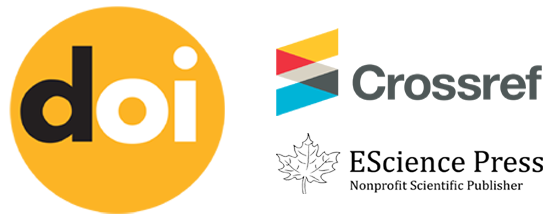MEMBER OF

| QUICK MENU |
| EDITORIAL TEAM |
| REVIEWERS |
| FOCUS AND SCOPE |
| PEER REVIEWER |
| PUBLICATION ETHICS |
| COPY RIGHT NOTICE |
| PUBLICATION FEE |
| AUTHOR GUIDELINES |
| CHECK FOR PLAGIARISM |
| OPEN ACCESS POLICY |



International Journal of Financial Accounting and Auditing is published by Indonesian Society of Applied Science (ISAS), Surabaya, Indonesia. It is academic, online, open access, peer reviewed international journal. It aims to publish original, theoretical and practical advances in Mechanical Engineering,conversion, Desain Mechanical, System' Manufactur, Material Technologi. International Journal of Financial Accounting and Auditing is published annually 2 times every June and December. The editor of International Journal of Financial Accounting and Auditing welcomes article submissions in accordance with the following guidelines:
Title (English 13pt, Bold, Italic, Capital)
Author’s name (12pt, bold)
Author’s Affiliation (11pt)
Email (11pt)
ABSTRACT (10pt, Bold)
Abstracts are written English with lengths of 150-200 words each and are tilted with times new roman 10 typed points with 1 spacing in 1 paragraph. Abstract is arranged with short sentences, clear, coherent, and systematic and can describe the research process from background, objective, method, research implementation, to the conclusion of research result.
Keywords : (3-5 keywords)
Introduction
Introduction contains brief and concise research backgrounds, and objectives. Theoretical support is included in this section, similar research that has been done can be stated.
Note : Manuscript typed with computer using Times New Roman font (Doc) one Column, on paper size 21 cm x 29.7 cm (A4), 1 spaced and in 11 point Times New Roman font. There should be a top and a bottom margin of 3.0 cm, with right and left margins of length 3 cm.
Literature Review
A literature review is a survey of scholarly sources (such as books, journal articles, and theses) on a particular topic. It gives an overview of key findings, concepts and developments in relation to a research problem or question.
All tables should be numbered with Arabic numerals. Every table should have a caption. Headings should be placed above tables, left justified. Only horizontal lines should be used within a table, to distinguish the column headings from the body of the table, and immediately above and below the table. Tables must be embedded into the text and not supplied separately. Below is an example which the authors may find useful.

All figures is copying in the format of jpg or png. Below is an example of the figure :
Fig. 1. Magnetization as a function of applied field. (Note that “Fig.” is abbreviated and there is a period after the figure number followed by two spaces.)
Research Methods
This section contains a complete and detailed description of the steps undertaken in conducting of research. In addition, the research step also needs to be shown in the form of flowchart of research or framework step in complete and detailed including reflected algorithm, rule, modeling, design and others related to system design aspect.
Results and Discussions
Results and Discussion is a section that contains all scientific findings obtained as research data. This section is expected to provide a scientific explanation that can logically explain the reason for obtaining those results that are clearly described, complete, detailed, integrated, systematic, and continuous.
The discussion of the research results obtained can be presented in the form of theoretical description, both qualitatively and quantitatively. In practice, this section can be used to compare the results of the research obtained in the current research on the results of the research reported by previous researchers referred to in this study. Scientifically, the results of research obtained in the study may be new findings or improvements, affirmations, or rejection of a scientific phenomenon from previous researchersConclusion
This section contains conclusions and suggestions. Conclusion is a brief, clear, and precise statement of what is obtained contains advantages and disadvantages, can be proven, and directly related to the purpose of research. Suggestion is a follow-up study that is still needed to refine the results of research in order to be efficient.
Acknowledgement - optional
Acknowledgements enable you to thank all those who have helped in carrying out the research. Careful thought needs to be given concerning those whose help should be acknowledged and in what order. The general advice is to express your appreciation in a concise manner and to avoid strong emotive language.
References
The References list contains only the literature that is really referred to in Times New Roman 11 point paper. The style of APA (American Psychological Association) using in-text and reference list citations. The use of Mendeley, end note or other citation tools are very recommended.
Referencing example :
Book
Mitchell, J.A., Thomson, M., & Coyne, R.P. (2017). A guide to citation. London, England: My Publisher
Journal Article
Mitchell, J.A. (2017). Citation: Why is it so important. Mendeley Journal, 67(2), 81-95
Mitchell, J.A. (2017). Citation: Why is it so important. Mendeley Journal, 67(2), 81-95. Retrieved from https://www.mendeley.com/reference-management/reference-manager
Publisher and License:
Publisher:
ISAS
Indonesian Society of Applied Science
Address: Raya ITS Street, Surabaya City, 60111, Indonesia
License:
CC BY 4.0
This work is licensed under a Creative Commons Attribution 4.0 International License.
